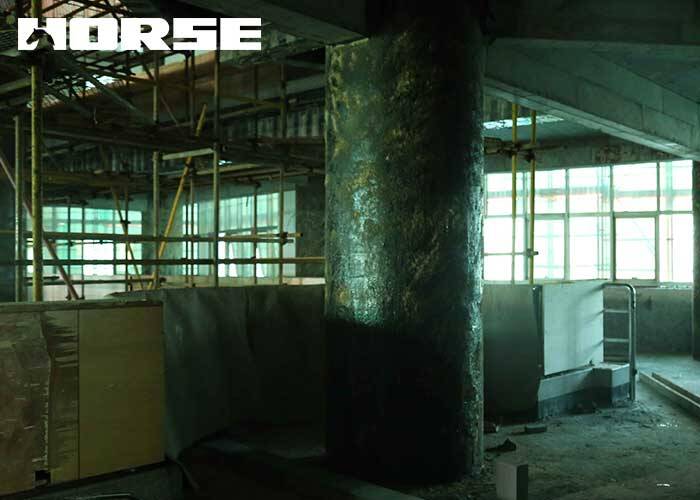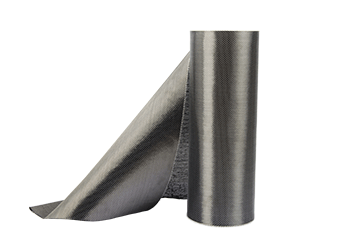Solutions
Horse Construction offers full range of structural strengthening materials with technical supports, documentation supports, products supports, project supports.
carbon fiber reinforcement of the pier column structure

Carbon fiber composite materials are usually composed of fibers and a matrix. Carbon fiber is a type of fiber composite material used to reinforce concrete structures. Due to the advantages of light weight, high strength, simple operation, easy to stick, and no corrosion, it is widely used in the reinforcement of various forms of components such as bending resistance, shear resistance, tensile resistance and seismic resistance. For old bridges with low reinforcement ratio or severe steel corrosion, the reinforcement effect is particularly significant. At the same time, it is suitable for the shear resistance, compression reinforcement of concrete piers, seismic ductility reinforcement, and repair after earthquake damage.
Material requirements
(1) Ordinary carbon fiber is made of polypropylene wax or mesophase pitch fiber through high temperature carbonization. The degree of carbonization is determined by properties such as elastic mold tearing, density and conductivity. The tensile strength of carbon fiber cloth is generally 3 550 MPa, and the elastic modulus is 2. 35 x 105 MPa. The project uses small tow polypropylene meal (PAN-based fiber) with a size of no more than 24 k, and no large tow fiber.
(2) The bonding material is the material that bonds the carbon fiber cloth to the surface of the concrete, and mainly includes primer, leveling material and impregnating resin. The bonding material should have sufficient rigidity and strength to ensure the transmission of shear force between the concrete and the carbon fiber, and at the same time should have sufficient toughness so as not to cause brittle bond failure due to concrete cracking.
(3) The protective coating should be made of insulating materials, and the coating must have good waterproof, fireproof, anti-aging, and strong adhesion properties.

Design principles
(1) The self-weight of the concrete bridge structure cannot be completely unloaded during reinforcement, and the secondary force must be considered. The size of the concrete bridge structure is large. Because the empirical formulas obtained under laboratory conditions are not necessarily suitable for the reinforcement of the bridge structure, these formulas must be modified, such as the safety factor.
(2) When calculating the reinforcement design, all design conditions and load combinations must be considered. The calculation process includes the checking calculation of the limit state of the bearing capacity and the limit state of the normal use. In general, the serviceability limit state will control the reinforcement design. The calculation of the ultimate state of the bearing capacity should take into account the various failure modes that may occur. Generally, the failure mode is divided into two categories, namely, the structure that can work as a whole after the carbon fiber sheet is pasted and the components that cannot work as a whole.
(3) The check calculation of the serviceability limit state includes: stress limitation to avoid the yield of steel bar, the destruction of concrete or excessive creep and the fracture of carbon fiber. Limitations of deformation. The limit of cracking ensures the durability of the structure and the integrity of the bond.
(4) The carbon fiber sheet exhibits linear elastic properties when stressed until it fails, and its brittleness is obviously different from the ductility of steel bars. On the one hand, carbon fiber sheets do not have the ductility of steel bars, and the ductility of the reinforced structure will be limited. On the other hand, due to the lack of ductility of the carbon fiber sheet, the redistribution of stress in the component will be restricted. Therefore, in the structural design of pasting carbon fiber sheets, carbon fiber sheets cannot be simply used as a substitute for steel bars, and the brittleness of carbon fiber sheets must be considered.
(5) Special design conditions should consider the falling off of carbon fiber sheets due to impact, man-made damage or fire.
Method and quality control of reinforcing pier with carbon fiber cloth
1) Wrapping method: usually a unidirectional carbon fiber cloth or fabric is impregnated with resin and then pasted on the column. The fiber direction of the carbon fiber cloth is generally the ring direction of the column, and the carbon fiber sheets can be laminated on multiple layers. Along the height of the column, the carbon fiber sheet pasting methods include: continuous pasting, spiral-shaped interval pasting, and ring-shaped interval pasting.
2) Filament winding method: similar to the wrapping method, the difference is that the winding method uses carbon fiber filaments instead of carbon fiber cloth or fabric, so that the fiber filaments can be automatically wound onto the column by a machine. Using this method can effectively control the thickness of the carbon fiber, fiber direction and fiber volume ratio.
3) Prefabricated carbon fiber board sleeve method: The prefabricated sleeve can be made into a semicircle or groove, or it can be made into a circle with notches. In addition, the shape of the column can be changed by this method, and the carbon fiber sleeve can also serve as a template for pouring concrete.
You can find anything here you are in need of, have a trust trying on these products, you will find the big difference after that.

High strength carbon fiber reinforced polymer (CFRP) strip / laminate / plate for structural strengthening and concrete repair

High strength, unidirectional carbon fiber fabric pre-saturated to form a carbon fiber reinforced polymer (CFRP) fabric used to strengthen structural concrete elements.

High strength, unidirectional carbon fiber sheet pre-saturated to form a carbon fiber reinforced polymer (CFRP) sheet used to strengthen structural concrete elements.